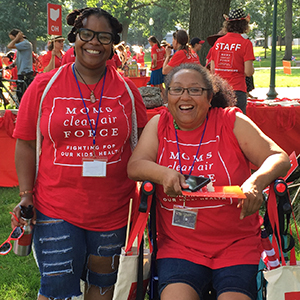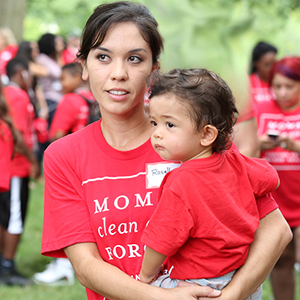![]()
Have a question for Mom Detective? Submit it here.
DEBBIE IN KENTUCKY ASKS:
I read that plastic shouldn’t be used to cook food as it’s a safety concern. Does this include silicone? I have a lot of colorful silicone baking molds, spatulas, and more in my kitchen. What is silicone, and is there something safer to use?
MOM DETECTIVE ANSWERS:
Generally speaking, heating plastic can cause the chemicals it contains to get into your food. There are a lot of different kinds of plastic on the market, and it can be tempting to think one is safer than another in the microwave, in the oven, or on the stovetop. Avoid this temptation, Debbie! The more studies being done on various plastics, the clearer it becomes that it’s good common sense to avoid heating all plastic when it comes to food prep.
Silicone is everywhere at cooking supply stores: reusable muffin cups, frying pan handles, ice trays, baking sheets. It’s cute! It bends! It’s alluring! It’s also widely touted as a great and even “eco-friendly” plastic alternative. But heads up, this is pure marketing. It’s not great, it’s not eco-friendly, and there are better alternatives.
Tell the Senate: Sound the Alarm on Reckless and Dangerous Cabinet Picks
Is silicone plastic?
If you want to spend hours on chemistry forums online, you’ll notice a frequent debate about whether silicone is plastic or not. Let me save you time: silicone is kind of a plastic, and it’s kind of a rubber. It’s largely made of silicon and oxygen. That sounds natural, but silicone is synthetic. Some sources of silicone include water, stone, or a petrochemical called methanol, derived from the fossil fuel “natural” gas.
Whatever the source, not all silicone is made the same. Some silicone cookware on the market can be full of potentially unsafe—and unknown—fillers and binders. It’s very difficult for the average consumer to know what exactly is in their silicone bakeware. I personally have never seen it for sale with an ingredient list. This is one of the many reasons I choose to avoid silicone for cooking—more on this below. A hack for testing the purity of silicone bakeware is to twist it. If you see white streaks, it could have fillers in it, making it not a great option for cooking or baking.
Adding to consumer confusion is that there are different kinds of silicone. Most likely what you have in your kitchen is the rubber-like flexible stuff, but other versions can be hard or even fluid. Medical-grade silicone is used for a variety of things from contact lenses to menstrual cups to breast implants. What’s sold for cooking is typically supposed to be the “food-grade” version, generally considered safe for use with food.
Silicone basics
Silicone cookware is touted as heat-resistant, freezer-safe, and oven-safe up to 428 degrees F. It should not be put in the dishwasher. After handwashing, it needs to be dried well as storing it damp or wet could lead to it breaking down, discoloring, or becoming sticky or tacky. If you choose to use silicone kitchenware, check with the manufacturer that it is 100% pure food-grade silicone. This is the stuff that should not react with food or produce hazardous fumes or odors. Again, it’s hard to find information on what silicone is made of.
Generally considered safe
Many articles, including this one in Scientific American, say the U.S. Food and Drug Administration (FDA) determined in 1979 that silicon dioxides were generally recognized as safe (GRAS) to use as food-grade materials. Today, I can’t find this statement on the FDA website. A disclaimer on the site may explain its current absence: “On Oct. 1, 2024, the FDA began implementing a reorganization impacting many parts of the agency. We are in the process of updating FDA.gov content to reflect these changes.” It looks like the FDA hasn’t conducted follow-up safety studies on silicone cookware.
I am especially curious about possible coatings on silicone cookware that make food slide out of it easily after baking or cooking. I want to know what those are and if they can migrate into food. We do know other nonstick chemicals have been proven unsafe. Health Canada, which is Canada’s federal department dedicated to health, does have accessible information on silicone. They call it “a synthetic rubber that contains bonded silicon (a natural element that’s very abundant in sand and rock) and oxygen” and caution against using it at high temperatures.
Health and silicone
Safety research on food-grade silicone and human health is frustratingly difficult to find. I recently reviewed silicone safety studies after a close friend called in a panic. She had accidentally turned her oven so high that it burned and melted her silicone baking sheet—which she had thought wasn’t possible. The smell in her home was acrid and scary. She wanted to know if it was safe for her (and her cat) to remain at home or if they had to leave. I suggested she open all her windows and go see Wicked, which is three hours long. So off she went (cat in car!). When she returned home, the smell was gone. Still, I couldn’t tell her what was potentially lingering in her kitchen after the scent dissipated because I couldn’t find studies on the topic.
There have been a handful of recent-ish studies on silicone, its components, and their migration into food. Some have determined that it depends on the type of silicone and the type of food (meat vs. dairy, for example). Other studies have focused on the differences and variations of silicone products, nonintentionally added substances that may migrate into food, and degradation of silicone products that could pose food safety hazards after exposure to high temperatures and freezing environments with long-term use. All of this, to my mind, begs more research on silicone’s safety and health impacts. It gives me pause as a consumer. Until this is better studied, I prefer to use proven safer alternatives.
Environmental impact
Silicone production can be harmful to the environment, especially as it’s made from fossil fuels. Its manufacture is energy-intensive, and it’s not easy to recycle, nor do most municipal recycling setups take it. It also can’t be composted. When people toss their silicone cookware, it sits in landfills for hundreds of years as it does not biodegrade. The one silicone baking item I owned years ago, an unwanted gift, lost its shape super quickly and was in a landfill almost immediately.
Better alternatives
The safest cookware and bakeware currently widely available are made of
- Cast iron
- Stainless steel
- Enamel-coated cast iron (a.k.a. enameled iron)
- Glass
- Wood
I have cast iron bread pans and muffin or cupcake “tins.” Instead of silicone baking mats, I use nothing to line my stainless steel and glass cookie sheets. Sometimes I will use a little butter if I’m making something likely to stick to the surface. All these materials are durable, tried and true, dependable, and safe. Give them a try!
If you, like me, want safe cookware without having to do a ton of research and second guessing, please join Moms Clean Air Force to demand our elected officials enact the strongest possible regulations on toxic chemicals in consumer products. Then we can get back to cooking and baking safe and nourishing food—with love—for our families.
Learn more about Moms’ work on chemical safety.
Tell the Senate: Sound the Alarm on Reckless and Dangerous Cabinet Picks




